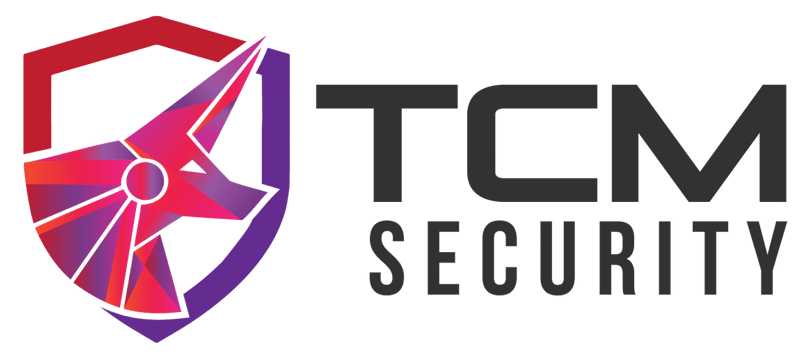Mastering Linux: My Journey Through TCM Security’s Linux 101 Course
Building my foundational skills in Linux
William Hughes Jr
7/24/20244 min read


Embarking on a journey to understand the intricacies of Linux is both exciting and rewarding. Recently, I had the pleasure of completing the TCM Security Linux 101 course, a comprehensive program designed to equip learners with the foundational knowledge and skills necessary to navigate the Linux operating system confidently. Here's a detailed overview of my experience and key takeaways from the course.
Course Overview
The TCM Security Linux 101 course is structured to cater to beginners and those looking to solidify their understanding of Linux basics. The curriculum covers a wide range of topics, including:
Introduction to Linux: Understanding the history and philosophy behind Linux, its different distributions, and why it is a preferred choice for many IT professionals.
Installation and Setup: Step-by-step guidance on installing Linux on various platforms, setting up virtual machines, and configuring the system for first-time use.
Command Line Basics: Mastering the command line interface (CLI), the core commands, and navigation techniques essential for efficient system management.
File Management: Learning to manage files and directories, permissions, and understanding the filesystem hierarchy.
User Management: Creating and managing user accounts, groups, and permissions to ensure a secure and organized system.
System Monitoring and Maintenance: Utilizing various tools and commands to monitor system performance, manage processes, and ensure system health.
Networking Basics: Understanding network configuration, troubleshooting network issues, and basic network security principles.
Scripting Basics: Introduction to shell scripting, automating routine tasks, and writing simple scripts to enhance productivity.
Key Takeaways
1. Command Line Proficiency One of the most valuable skills I gained from this course is proficiency with the command line interface. Initially daunting, the command line became a powerful tool as I learned essential commands and navigation techniques. Mastering commands like ls, cd, cp, mv, and rm allowed me to manage files and directories with ease. Additionally, learning to use text editors like nano and vim was instrumental in editing configuration files and scripts.
2. Effective File and User Management Understanding the Linux filesystem hierarchy and file permissions is crucial for maintaining an organized and secure system. The course provided in-depth knowledge of file management commands and techniques, enabling me to manage files, directories, and permissions effectively. Furthermore, the user management section taught me how to create and manage user accounts, ensuring proper access control and system security.
3. System Monitoring and Maintenance Keeping a Linux system running smoothly requires effective monitoring and maintenance. The course introduced me to various tools and commands for monitoring system performance, managing processes, and troubleshooting issues. Tools like top, htop, and ps became indispensable for keeping track of system resources and processes.
4. Networking Essentials Networking is a critical aspect of system administration, and the course covered the basics of network configuration and troubleshooting. I learned how to configure network interfaces, use tools like ping and netstat for network diagnostics, and understand basic network security principles. This knowledge is essential for ensuring connectivity and security in a Linux environment.
5. Introduction to Scripting Automating routine tasks with shell scripting is a powerful way to enhance productivity. The course provided a solid introduction to scripting, teaching me how to write simple scripts to automate tasks like backups, file management, and system monitoring. Learning to script has opened up new possibilities for streamlining my workflow and managing systems more efficiently.
Practical Applications
Completing the TCM Security Linux 101 course has equipped me with practical skills that I can apply in various scenarios:
System Administration: Managing Linux servers and workstations with confidence, ensuring they run smoothly and securely.
Networking: Troubleshooting network issues, configuring network interfaces, and maintaining network security in a Linux environment.
Automation: Writing scripts to automate routine tasks, improving efficiency and reducing manual effort.
Security: Implementing proper user and file permissions, monitoring system activity, and maintaining a secure system.
Personal Growth and Strength Development
The TCM Security Linux 101 course not only equipped me with technical skills but also significantly contributed to my personal and professional growth. Here are a few ways it enhanced my strengths:
1. Problem-Solving Skills The hands-on approach of the course required me to tackle real-world scenarios, which honed my problem-solving abilities. Whether it was troubleshooting a network issue or configuring user permissions, each challenge strengthened my capacity to analyze problems and devise effective solutions.
2. Attention to Detail Linux commands and configurations demand precision. The course taught me the importance of attention to detail, as a single typo could lead to significant errors. This meticulousness is now ingrained in my workflow, ensuring accuracy in all my technical endeavors.
3. Confidence in Technical Skills Prior to the course, I often felt hesitant when dealing with Linux systems. The comprehensive training boosted my confidence, allowing me to approach Linux-related tasks with assurance. This newfound confidence is invaluable, especially in my journey towards a career in cybersecurity.
4. Adaptability and Continuous Learning The dynamic nature of Linux and open-source environments fosters a culture of continuous learning. The course instilled in me a mindset of adaptability, encouraging me to stay updated with the latest developments and continuously seek knowledge to stay ahead in the field.
5. Collaboration and Communication Participating in forums and discussions with fellow learners enhanced my collaboration and communication skills. Sharing knowledge, seeking advice, and collaborating on solutions fostered a sense of community and improved my ability to work effectively in team environments.
Conclusion
The TCM Security Linux 101 course has been an invaluable learning experience, providing a solid foundation in Linux fundamentals. The skills and knowledge I gained from this course have empowered me to confidently navigate and manage Linux systems as well as speak to different concepts.
